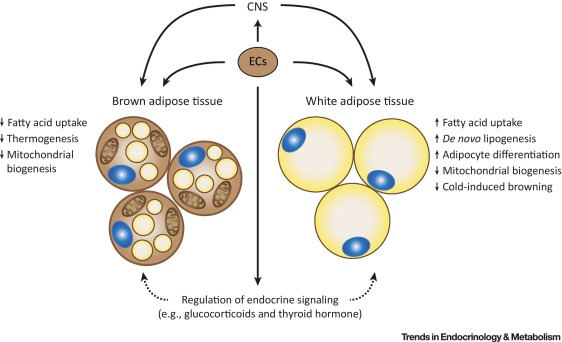So much research on the gut … lots to learn and some can be a bit technical. So let’s dive in:
This Is Your Gut on Sugar was written by Markham Heid for Elemental.medium.com/Nuance, 19 August 2021. Researchers are finally uncovering the exact ways that sugar disrupts the GI tract
In 1776, at the start of the Revolutionary War, the average person consumed about four pounds of sugar each year. Today, per capita sugar intake in the U.S. exceeds 120 pounds. Roughly 75% of all foods and beverages in this country contain added sugar. According to the American Heart Association, the average adult swallows the equivalent of six bowling balls of the stuff each year. Meanwhile, the average child downs enough added sugar to fill a bathtub.
From the microbiome to the lining of the small intestine, sugar seems to imperil the healthy workings of the human gastrointestinal tract in multiple ways.
Robert Lustig, MD, is an endocrinologist and professor emeritus of pediatrics at the University of California, San Francisco. He’s also the author of Metabolical, a book that examines the ways processed foods and sugar make people sick. “There are at least three processes that are going on that sugar seems to have a role in,” he says.
The first has to do with the way the gut and liver handle the sugar you eat. “Up to a point, the intestine has the ability to turn fructose into downstream byproducts that you don’t absorb,” he explains. In other words, if your sugar intake is low, your gut will pass most of that sweet stuff along so that it ends up in your feces. The little bit of sugar you do absorb will end up in your liver, which will convert it into energy. But if you eat a diet high in sugar, your gut adjusts to this by producing enzymes that facilitate sugar’s breakdown and absorption. “You create a positive feedback system where the more of it you eat, the more you absorb,” Lustig explains. That means more sugar ends up in your liver, which will struggle to convert it into energy. “What happens then is your liver turns it into fat,” he says. “That fat either gets exported out as triglycerides, which increases your risk for heart disease or obesity, or it doesn’t make it out, and contributes to fatty liver disease and other chronic diseases — especially diabetes.”
The second sugar-related problem has to do with the semipermeable lining of the gut. This lining is designed to be a dynamic, highly selective barrier that allows nutrients to pass through while keeping out harmful bacteria, large food molecules, and other inappropriate material. “There are proteins that maintain the tight junctions that make your intestine impermeable to that bad stuff,” Lustig explains. “If those proteins fail, the tight junctions fail, and the bad stuff that gets through could generate an immune response.” This immune response manifests as food allergies, autoimmune disorders such as Crohn’s disease, and other gut-related health problems.
The third way that sugar harms the gut has to do with the microbiome — the billions of bacteria that populate the GI tract. While some of these bacteria are good for us, others are associated with diabetes, autoimmune disorders, and the other health problems mentioned above. The types and numbers of these bacteria that live inside a person’s gut depend in part on that person’s diet.
Read more: Your gut on sugar
The role of gut-brown adipose tissue axis in regulating glucose metabolism was reported by the Chinese Academy of Sciences for Phys.org, 23 August 2021.
 A recent study conducted by Prof. John Speakman’s lab at the Institute of Genetics and Developmental Biology (IGDB) of the Chinese Academy of Sciences shed a new light on the important role of gut-brown adipose tissue axis in regulating glucose metabolism.
A recent study conducted by Prof. John Speakman’s lab at the Institute of Genetics and Developmental Biology (IGDB) of the Chinese Academy of Sciences shed a new light on the important role of gut-brown adipose tissue axis in regulating glucose metabolism.
In the last two decades it has become clear that the bacteria in our guts isn’t there just to digest food. It seems to play an important role in all sorts of physiological processes. One intriguing observation made a few years ago is that if the bacteria in the guts of mice are killed using an antibiotic cocktail then their ability to dispose a glucose bolus is actually improved. Since poor ability to clear glucose is related to the risk of developing diabetes this observation has been seen as a potential way to understand how glucose clearance ability might be improved.
Mice like most mammals have two types of adipose tissue—brown and white. Brown fat burns energy while white fat stores it. However, there are some cells which can flip between being white and being brown. As more cells in white adipose tissue become brown then in theory that tissue should have greater capacity to utilize glucose. Previous work showed that when you kill the gut bacteria the white adipose tissue gets browner. Another study suggested that the greater glucose disposal might be happening in the liver.
In the new study, Speakman’s lab in Beijing used isotopic traces to look at glucose uptake across all the tissues and then compared which ones changed when the microbiota was killed. The researchers used a mouse with diphtheria toxin receptor on cells expressing UCP1 to show that while knocking out UCP1 had no effect on the improvement, actually killing the brown adipocytes did, suggesting the indispensable role of brown adipocytes in the improved glucose clearance.
Read more: The role of gut-brown adipose tissue axis in regulating glucose metabolism


Time for a break and a podcast? From TheSugarScience.org: Episode 93: Graciela Lorca, PhD, UFLA discusses microbiome probiotics & T1D, August 19, 2021
Tummy aches during the pandemic? A Gut-Wrenching Pandemic for Patients With Functional GI Issues was posted by Zaina Hamza for MedPageToday.com, 16 August 2021. Symptoms weren’t necessarily tied to COVID, researchers found
 Compared to the 6 months before the pandemic, more patients with common functional gastrointestinal and motility disorders (FGIMD) experienced symptoms during the pandemic, including nausea or vomiting (16% vs 22%, respectively), constipation (13% vs 17%), and abdominal pain (23% vs 30%, P<0.0001 for all), reported John Gubatan, MD, from Stanford University School of Medicine in California, and colleagues. These patients also experienced more diarrhea (10% vs 13%, P<0.0001) and weight loss (4.3% vs 5.8%, P=0.01), the authors wrote in Neurogastroenterology & Motility.
Compared to the 6 months before the pandemic, more patients with common functional gastrointestinal and motility disorders (FGIMD) experienced symptoms during the pandemic, including nausea or vomiting (16% vs 22%, respectively), constipation (13% vs 17%), and abdominal pain (23% vs 30%, P<0.0001 for all), reported John Gubatan, MD, from Stanford University School of Medicine in California, and colleagues. These patients also experienced more diarrhea (10% vs 13%, P<0.0001) and weight loss (4.3% vs 5.8%, P=0.01), the authors wrote in Neurogastroenterology & Motility.
Gubatan told MedPage Today that the increases in gastrointestinal symptoms for this group “was not directly linked with having COVID-19, suggesting other factors may be at play — anxiety/stress from pandemic, lifestyle changes imposed by stay-at-home orders, etc.”
Read more: A Gut-Wrenching Pandemic for Patients With Functional GI Issues
So what about Intuitive Eating? What is intuitive eating? was posted by Alicia Sparks for MedicalNewsToday.com, 23 August 2021. Intuitive eating is an eating method that encourages a healthy relationship with food. It promotes body positivity and focuses on recognizing and honoring hunger.
Dietitians Evelyn Tribole and Elyse Resch coined the term “intuitive eating” in their 1995 book, Intuitive Eating: A Revolutionary Diet Approach. However, they were not the first people to teach the principles of this eating method. In 1973, Thelma Wayler founded Green Mountain, a non-diet community emphasizing sustainable habits for long-term health. Several years later, Susie Orbach published Fat is a Feminist Issue, which outlines how to end dieting and food anxieties. Poet Geneen Roth started writing about emotional eating in 1982.
 The origins of intuitive eating may be murky, but its core message is clear: Intuitive eating is anti-diet and focused on building a healthy body image, making peace with food, and listening to the body. Unlike diets that label foods as “good” or “bad,” intuitive eating focuses on honoring hunger with foods that benefit both physical and mental health.
The origins of intuitive eating may be murky, but its core message is clear: Intuitive eating is anti-diet and focused on building a healthy body image, making peace with food, and listening to the body. Unlike diets that label foods as “good” or “bad,” intuitive eating focuses on honoring hunger with foods that benefit both physical and mental health.
According to Tribole and Resch, intuitive eating requires a person to listen to their hunger signals and eat what they want without guilt. People who eat intuitively should enjoy eating while honoring hunger cues and recognizing fullness. Ideally, this would be a natural process. However, for some people — such as those who have spent many years dieting — it is not. Years of restricting food, using food to cope with negative emotions, and obsessing over healthy or so-called clean foods are all reasons why people struggle with intuitive eating. According to Tribole and Resch, toddlers are an example of naturally intuitive eaters. People following intuitive eating try to return to this simpler view of food. This dietary approach also aims to help people build a stronger relationship with their body by learning to trust its natural hunger and fullness cues.
How to eat intuitively: Intuitive eating is a lifestyle practice, and each person will have a different experience. People interested in getting started with intuitive eating can follow these guidelines:
-
- Observe food habits: Pay attention to food habits without judgment.
- Reflect on reasons for eating: Consider whether physical hunger or negative emotion is behind the decision to eat.
- Try mindfulness: Mindfulness training may help change the psychological factors behind emotional eating.
- Listen to hunger cues: Eat when the body feels hungry, and do not restrict food.
- Avoid moralizing food: Do not label foods as good or bad.
Read more: What is intuitive eating?
 Type 1 University – the School of Higher Learning for those taking insulin via pump or injection! Really, a school for US???? YES! Type 1 University, powered by Gary Scheiner, MS, CDCES, founder of Integrated Diabetes Services LLC, the worldwide leader in 1-on-1 diabetes self-management education and glucose control consulting. It’s easy and you can do it from your own home!
Type 1 University – the School of Higher Learning for those taking insulin via pump or injection! Really, a school for US???? YES! Type 1 University, powered by Gary Scheiner, MS, CDCES, founder of Integrated Diabetes Services LLC, the worldwide leader in 1-on-1 diabetes self-management education and glucose control consulting. It’s easy and you can do it from your own home!
It’s easy to get started. Current course topics include Nutrition & Lifestyle, Technology and many more. Simply …
- Select a course
- Pay your $25 per course tuition
- Clink on the link & learn the latest!
Find out more and sign up: TYPE-1 UNIVERSITY


Gray is the very best. I believe I will see if I can sign up for one of the courses.